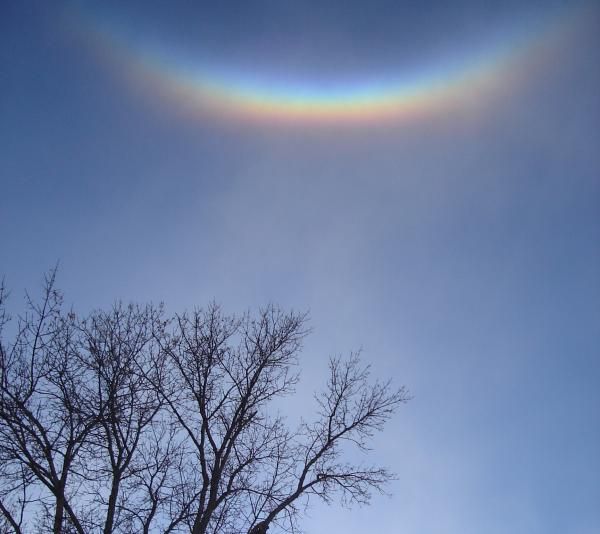
Cheese! Rare 'Smile in the Sky' Graces Baltimore

Old and tired: Frowny rainbows. New and fresh: Smiles in the sky.
A rare atmospheric phenomenon called "a smile in the sky" was spotted over Baltimore's Inner Harbor last week, reported the Maryland Weather blog from the Baltimore Sun (Click here to see Baltimore's "smile in the sky"). These smiles look exactly like upside-down rainbows, but are noticed less than rainbows because they occur higher in sky. [Infographic: Earth's Atmosphere Top to Bottom .]
Technically speaking, upside-down-looking rainbows are called circumzenithal arcs (circum means around, zenith means overhead). The sky puts on a happy face as sunlight refracts through ice crystals that are lined up horizontally in cirrus clouds. Rainbows are created similarly, but with refraction through raindrops.
The light that creates the smile in the sky exits the ice crystals through a prism face and separates colors spectacularly. The sun must be less than 32 degrees above the horizon for the light to hit the ice crystals at the right angle.
The picture taken in Baltimore has another rarely seen feature. There appears to be another arc directly below the smile, almost as if it's the smile's reflection, points out Frank Roylance, who writes the Maryland Weather blog. That arc may be what's called a "supralateral arc," which is formed the same way, but through different geometry.
For the two to be touching, the sun would have needed to be within 27 to 32 degrees above the horizon.
- Infographic: Earth's Atmosphere Top to Bottom
- Weird Glow from Earth's Auroras Explained
- Gallery: Electric Earth
Reach OurAmazingPlanet staff writer Brett Israel at bisrael@techmedianetwork.com. Follow him on Twitter @btisrael.
Sign up for the Live Science daily newsletter now
Get the world’s most fascinating discoveries delivered straight to your inbox.












